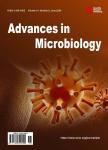Microbial Adhesion on Orthodontic Ligating Materials: An <i>in Vitro</i>Assessment
Microbial Adhesion on Orthodontic Ligating Materials: An <i>in Vitro</i>Assessment作者机构:Microbiology Division Central Leather Research Institute (Council of Scientific and Industrial Research) Adyar Chennai India Teeth’N’Jaws Center Chennai India
出 版 物:《Advances in Microbiology》 (微生物学(英文))
年 卷 期:2013年第3卷第1期
页 面:108-114页
学科分类:1002[医学-临床医学] 100214[医学-肿瘤学] 10[医学]
主 题:Adhesion Growth Orthodontic Ligatures Growth OD CFU Metabolic Activity XTT
摘 要:Orthodontic fixed appliance therapy is the commonest mode of treatment for most types of malocclusions (teeth irregularities). However, these materials are liable for microbial adhesion, which predisposes the wearer to increased microbial burden. The present study aims to evaluate, microbial adhesion and growth on commonly used orthodontic ligating materials (Teflon coated wire, stainless steel wire, elastic rings) under in vitro condition. Furthermore, the role of saliva on adhesion and microbial colonization on said materials was also assessed. Experiments were conducted with three different orthodontic ligating materials each in 6 numbers. Growth OD, metabolic activity and cell viability were the experimental variables in addition to SEM (Scanning Electron Microscopy) analysis performed. Results revealed irespective of the nature of the ligating materials, microbial adhesion and growth were observed in all the materials and suggested that the chosen materials promotes microbial adhesion. Nevertheless, stainless steel ligatures were less prone to adhesion compared to Teflon coated and elastic ligatures. Presence of saliva accelerates adhesion and growth.



